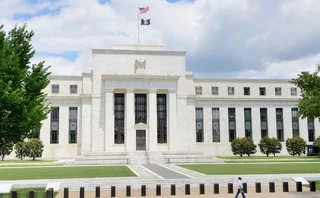
Intervention: friend or foe?

As summer progressed, we witnessed renewed intervention by the Swiss National Bank to weaken the strong Swiss franc. Periodically, central banks intervene in foreign exchange markets to influence exchange rate levels or to restore currency stability. When this happens, adherents of "systematic, trend-following" strategies may see their performance affected. Here, we will try to establish whether past episodes of central bank intervention have had an adverse impact on the profitability of trend-following strategies.
Trend-following strategies have been used in active FX investment for decades, many times very profitably. Trend-following enables participation in a currency's movements, whether driven by macroeconomic fundamentals such as growth and inflation, interest rate differentials, or slow incorporation of information.
As big market players, central banks seem to believe they have the ability to counter or influence currency prices through intervention. But is this true?
Central banks are most likely to intervene in FX markets for two reasons:
1) to prevent excessive currency appreciation/depreciation
2) to counter currency overshooting and reduce excess volatility associated with disorderly market conditions
In the first case, if the intervention is successful, trend-followers may experience short-term losses. Obviously, a trend-follower can make losses when trends reverse abruptly. In the second case, intervention may actually help them by smoothing trends.
To verify our conjecture, we examine some noteworthy historical interventions in G7 currency markets. We distinguish the effect of intervention through a simple event study procedure by first splitting historical periods in two - prior to intervention and during/after intervention. Then we examine the change in the first two moments of the daily distributions of four indicators:
I. Returns on the currency pair in which the intervention takes place;
II. Strength of trends proxied by ADX (J Welles Wilder, 1978);
III. Returns on a naive systematic long-term trend-following strategy - DB Momentum Excess Returns Index;
IV. Excess returns from trading in the currency pair subject to intervention of a sophisticated strategy - Insch Kintillo, a proprietary systematic medium-term trend-following trading strategy.
A number of difficulties arise in the empirical study, such as the large variety of interventions. First of all, intervention may have several possible purposes. Second, it can be performed through different channels: outright currency sale or purchase, currency swaps, liquidity injections, communication. It can be unilateral or co-ordinated among central banks. And finally, it can be sterilised or not. Intervention episodes are few and far between, and there is often little or no resemblance between them in size, purpose or economic environment.
Intervention is sometimes officially announced, other times not announced but confirmed upon request, or even performed in secret. Identifying unannounced interventions is difficult, due to the large variation among different countries when it comes to practices of disclosure and transparency regarding currency intervention.
Some of the empirical shortcomings in analysing interventions are:
a) Interventions are rare events;
b) The decision to intervene is endogenous, driven by extreme economic conditions;
c) The behaviour of the exchange rate in the absence of intervention cannot be observed.
Any conclusion regarding the effectiveness of intervention should be qualified in the light of these shortcomings.
Noteworthy historical interventions and their effects
A. Co-ordinated intervention on the euro, September 2000
On September 22, 2000, the US Treasury intervened in a co-ordinated effort with the European Central Bank, Bank of Japan, Bank of Canada and Bank of England, to support the value of a falling euro. The operation succeeded in lifting the euro against the US dollar by approximately 4% over five days. After this, the euro continued to depreciate until mid-quarter, appreciated towards the end of the year, then resumed its downtrend in 2001.
B. Bank of Japan intervention, 2003-2004
Between 2003 and 2004, the Bank of Japan sold yen totalling US$315 billion to slow the appreciation of the currency. The impact was almost imperceptible on the direction of the yen.
C. Bank of Australia intervention in 2007
The Reserve Bank of Australia (RBA) has intervened in the currency markets almost continuously over the past 25 years. In the summer of 2007, the financial crisis hit markets in a dramatic fashion, and the unwinding of the carry trade was one of its symptoms. The RBA responded by buying Australian dollars for the first time since 2001. While the intervention lasted around three months, it managed to support the currency at the cost of diminishing the Australia Official Reserves from above A$80 billion to A$30 billion.
D. Swiss National Bank intervention, 2009-2010
The Swiss National Bank performed an enormous and terribly costly amount of intervention between 2009 and 2010, with balance sheet losses of almost Sfr35 billion. The volatility of the euro/Swiss franc cross was diminished during the intervention window, but the appreciation trend for Swiss franc could not be reversed.
E. Bank of Japan intervention, September 2010
The Bank of Japan intervened again in September 2010 by selling ¥2.12 trillion (US$25 billion) in an attempt to weaken the currency from a 15-year high against the US dollar. The intervention was unilateral, and met with hostility by other central banks. It was unsterilised in an attempt to boost its effectiveness and at the same time to conduct monetary easing by injecting liquidity. However, the yen continued to appreciate to a new high on November 1, 2010, of 80.51 (against US$).
F. G7 and Bank of Japan co-ordinated intervention, March 2011
G7 governments co-ordinated to control the yen appreciation in March 2011, after the Japanese earthquake and tsunami disasters. The intervention was considered successful initially, but its effect lasted for less than a month. After April 7, the yen resumed its appreciation due to renewed uncertainties in global markets.
G. Swiss National Bank (SNB) intervention, August 2011
Between August 3 and August 17, 2011, the SNB announced three sets of measures to weaken the Swiss franc. First, it expanded banks' sight deposits at SNB from Sfr30 billion to Sfr80 billion; it further increased the value from Sfr80 billion to Sfr120 billion and then again to Sfr200 billion. As a result of this, the Swiss franc fell by 10% against the euro from the August 10 peak of 1.38, for six calendar days.
It remains to be seen how long Swiss franc weakness will last. Will this intervention be more effective than the previous ones? We doubt it. Central bank interventions of the recent past have had almost no impact on currency rates and an ambivalent impact on the strength of trends. They have had little or no impact on the trading returns of two trend-following strategies (one naive, one sophisticated).
The results may differ from one intervention to another because of different intervention purposes, the size of operations and the amount of co-ordination. Most probably they differ because of the economic conditions around the intervention date.
However, what is starkly notable about interventions is the lack of effect they have on the trend direction. Which is the best way to intervene? Simply not doing it?
Regarding trend-following strategies, central bank intervention acted on the one hand as an ‘enemy' by temporarily weakening trends (in four cases out of six), but just as often as a ‘friend' by reducing the various measures of trend volatility.
The profitability of the Insch Kintillo system was not affected by intervention in any of the six cases. Its volatility increased only in one case, but it was significantly lowered in three cases.
Christopher Cruden is chief executive at alternative investment manager, Insch Capital Management in Zug, Switzerland, and Purnur Schneider is associate director at research company Insch Quantrend in Lugano, Switzerland
Only users who have a paid subscription or are part of a corporate subscription are able to print or copy content.
To access these options, along with all other subscription benefits, please contact customer services - www.fx-markets.com/static/contact-us, or view our subscription options here: https://subscriptions.fx-markets.com/subscribe
You are currently unable to print this content. Please contact customer services - www.fx-markets.com/static/contact-us to find out more.
You are currently unable to copy this content. Please contact info@fx-markets.com to find out more.
Copyright Infopro Digital Limited. All rights reserved.
As outlined in our terms and conditions, https://www.infopro-digital.com/terms-and-conditions/subscriptions/ (point 2.4), printing is limited to a single copy.
If you would like to purchase additional rights please email info@fx-markets.com
Copyright Infopro Digital Limited. All rights reserved.
You may share this content using our article tools. As outlined in our terms and conditions, https://www.infopro-digital.com/terms-and-conditions/subscriptions/ (clause 2.4), an Authorised User may only make one copy of the materials for their own personal use. You must also comply with the restrictions in clause 2.5.
If you would like to purchase additional rights please email info@fx-markets.com
More on Central Banks
Saxo Bank: Lagarde may declare monetary policy overreached limits
In one of its ‘outrageous predictions’ for 2020, the Danish bank says the ECB may wake up to the sad reality of negative interest rates
Cambodia extends blockchain payment system pilot
Central bank lengthens trial to end of year and explores including cross-border transactions
Central banks urged to adopt DLT-based CBDC
Industry figures argue central bank money needed for token-based securities settlement, but central bankers sceptical
Fed provides update on future RTGS system
FedNow cross-border payments could be considered in future, US central bank says
Shekel’s strength clouds Bank of Israel’s inflation outlook
Economists ponder whether central bank actions contribute to lower prices and what priorities it should consider in the near future
Central banks need better crypto asset data – ECB research
Links between crypto assets and regulated financial sector may increase and challenge regulatory frameworks
Thai central bank to work with HKMA on cross-border blockchain
Central banks to work on technology to transfer funds across borders
US Treasury designates China a currency manipulator
Renminbi crosses barrier of seven yuan per US dollar amid trade tensions on August 5







